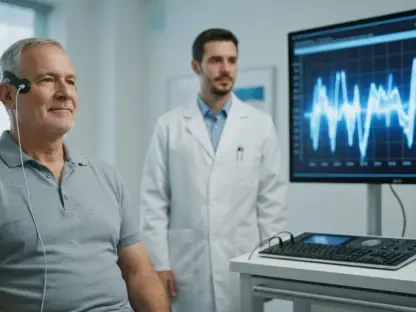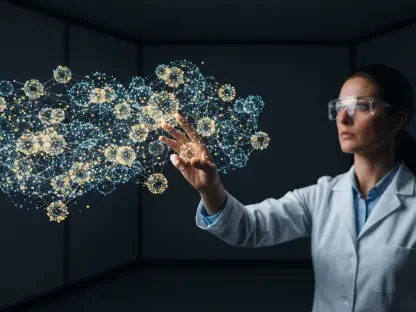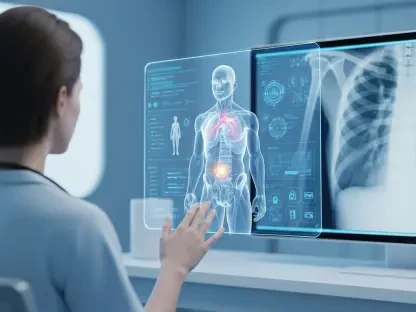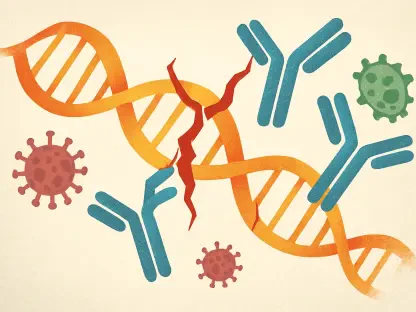Recent advancements in multi-directional collagen tissue engineering are promising to redefine the future of bioengineering and regenerative medicine. Collagen, a cornerstone protein in the human body, is essential for maintaining structural integrity and mechanical strength in various tissues. However, the specific orientation of collagen fibers, crucial for determining tissue functionality, has long puzzled researchers. Recent studies conducted by researchers at YOKOHAMA National University have made significant strides in unraveling the mysteries surrounding collagen orientation. Through innovative techniques involving fluidic devices and three-dimensional (3D) printing, these researchers are paving the way for breakthrough applications across multiple scientific and medical fields.
Innovative Methodologies in Collagen Fabrication
The cutting-edge approach adopted by the YOKOHAMA team transcends traditional methodologies by employing a unique integration of fluidic devices and 3D printing to fabricate oriented collagen tissues. This novel method enables manipulation of collagen fibers into complex structures using carefully controlled flow dynamics. Such precision is not achievable with older techniques like magnetic alignment and electrospinning, which come with inherent drawbacks. Magnetic alignment, for instance, often results in residual beads that compromise tissue models, while electrospinning relies on volatile organic solvents, posing hazards to safety and the environment. In contrast, the new technique exclusively uses collagen, directing flow through fluidic channels to achieve desired orientations without harmful byproducts.
One pivotal aspect of this research is its potential to influence future bioengineering applications significantly. By understanding how collagen geometry affects cellular behavior within tissues, scientists can develop more sophisticated tissue models. Bioengineered tissues require precise fiber orientations to mimic natural structures and functions accurately. The Yokohama researchers achieved these orientations by strategically guiding flow within type 1 collagen solutions, supplemented with cellular elements, inside fluidic molds designed through 3D printing. These innovations have enabled the creation of tissues with multi-directional orientations, simulating alignment found in natural tissues like dermis or skull bones. Such advancements fill a crucial gap in fine tissue modeling, unachievable with pre-existing methods.
Implications for Regenerative Medicine and Beyond
The development of this method heralds significant implications beyond academic interest, particularly within regenerative medicine. The capability to customize biomaterial scaffolds at a refined level allows scientists to tailor tissue models to specific requirements, paving the way for innovative solutions in transplantations and in vitro tissue modeling. These advancements hold the promise of revolutionizing medical practices by allowing practitioners to create precisely engineered tissues that adapt seamlessly to varying biological needs. By harnessing the potential of custom-oriented collagen constructs, possibilities for new treatments and interventions in tissue engineering could emerge.
This leap in understanding the relationships between tissue orientation and functionality also opens pathways for exploring new frontiers in tissue applications. The precise orientation achieved through fluid dynamics could lead to more effective models that better replicate how tissues operate naturally. Enhanced models could provide insights into developing therapeutics and interventions, showcasing the crucial role orientation plays in tissue behavior and paving the way for breakthroughs beyond theoretical research. Such discoveries may spearhead advancements in understanding disease mechanisms, thus contributing significantly to health sciences.
Challenges and the Road Ahead
Navigating the path to such advanced discoveries involved concerted efforts from a team of experts at YOKOHAMA National University. The researchers, including Mizuki Iijima and Shoji Maruo, also received pivotal support from the university’s Instrumental Analysis Center, showcasing the importance of collaboration in breaking new scientific ground. This multidisciplinary approach not only fueled progress but also underscored the necessity of collective expertise when addressing complex bioengineering challenges.
Moving forward, the next steps in this research will likely involve refining the existing models further while exploring various tissue types and functionalities. There remains enormous potential in leveraging this newfound understanding of collagen orientation to create even more intricate and functional tissue models. As the research evolves, it could unlock transformative insights into biological processes, potentially setting new standards in clinical applications and regenerative therapies. Through continued exploration, this endeavor promises to significantly impact how medical professionals and researchers approach tissue engineering and regenerative medicine in the coming years.
Conclusion: Future Prospects and Impact
Recent advances in the field of multi-directional collagen tissue engineering hold the potential to transform bioengineering and regenerative medicine. Collagen, a vital protein found throughout the human body, plays a crucial part in ensuring the structural integrity and mechanical strength of tissues. The orientation of collagen fibers is particularly important, as it significantly impacts the functionality of these tissues, posing a longstanding challenge for scientists. At YOKOHAMA National University, researchers have achieved notable progress in deciphering the complexities associated with collagen orientation. By employing cutting-edge techniques utilizing fluidic devices and three-dimensional (3D) printing, these pioneering studies are laying the groundwork for significant breakthroughs across a variety of scientific and medical disciplines. This groundbreaking work not only promises to enhance our understanding of tissue engineering but also offers new possibilities for developing advanced therapies and innovations in medicine.









